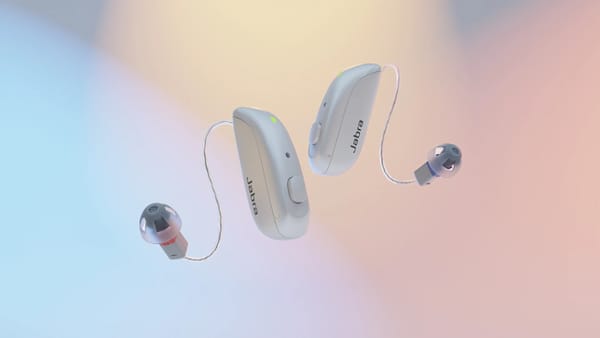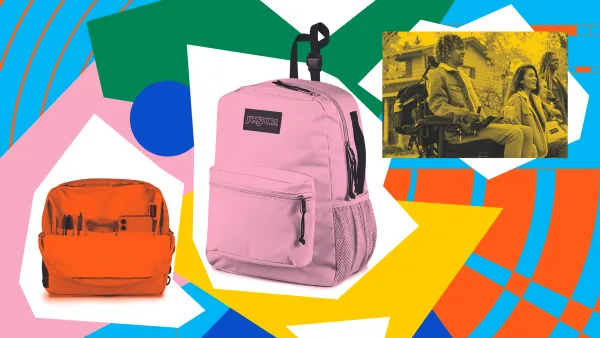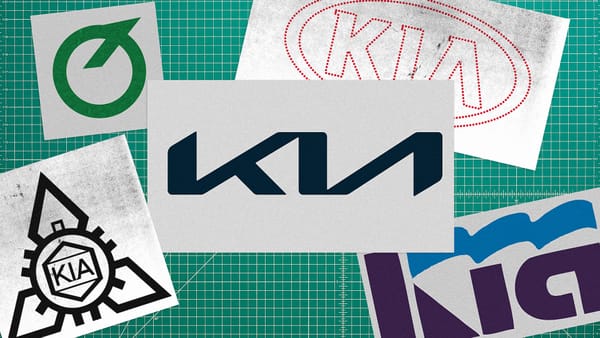Originally published by Fact Company
After making his mark in Silicon Valley, Icelandic designer and tech mogul Haraldur “Halli” Thorleifsson is now solving a far more analog problem: the inaccessibility of local storefronts.
As a wheelchair user, Thorleifsson knows firsthand how exclusion can be built into a city. “If you don’t see anyone using a wheelchair,” he says, “it’s not because they don’t exist—it’s because they have nowhere to go.” Thorleifsson has experienced such access barriers to public spaces throughout his life, but the turning point came on a late-night walk with his family in downtown Reykjavík, when he couldn’t join his son in a corner store because of a single step at the entrance.
“As I was sitting outside, I kept looking at that one step,” he recalls. “Over the years, steps like that had stopped me from being able to go cafés to meet friends, from going to the barber, or going Christmas shopping with my family. That one step was the main obstacle between me and fully participating in society. And, not just me; anyone who uses a mobility device to get around. I decided that this had to change and since nobody else seemed to be doing anything, I figured it was up to me.”
So in 2021, Thorleifsson launched Ramp Up Reykjavík to fund the installation of 100 ramps in places with the most foot traffic across Iceland’s capital—cafés, restaurants, and shops. Four years later, the project has delivered far more ramps than initially promised and well beyond Reykjavík to additional Icelandic cities, garnering a fitting name change to Ramp Up Iceland. On March 14, Thorleifsson celebrated the completion of Ramp Up Iceland with a ribbon-cutting ceremony and the support of the mayor, prime minister, president, and other leaders of the municipal governments across Iceland. Now, the team plans to expand the initiative to Paris and Lviv, Ukraine.

An age-old accessibility problem
Creating accessibility in any urban environment is often met with logistical and bureaucratic challenges. But in cities with historic buildings that predate modern accessibility standards by decades or even centuries, those challenges are even further amplified. In downtown Reykjavík, most buildings date back to the 18th century with storefronts that sit slightly elevated above street level, making one or two steps a recurring access barrier across most of the city’s core business district. And this isn’t just an Icelandic issue. In a recent study, 70% of disabled people surveyed said they’ve shown up to a building only to realize they couldn’t get inside. More than half of them (60%) reported that they had to leave without completing their task because the building wasn’t accessible. This study was conducted in the United States, where we have the Americans with Disabilities Act (ADA), a law intended to protect the rights of disabled people and ensure accessible infrastructure.
Yet, even with the ADA, there are still massive access inequities in our urban environments. Buildings, sidewalks, and transportation systems often remain out of compliance or are poorly maintained, and legal protections such as the ADA aren’t universal. In many older cities around the world, accessibility standards are inconsistent, and the push to retrofit historic areas is often delayed or deprioritized in favor of architectural preservation.
Thorleifsson’s work is beginning to change this. The goal of Ramp Up Reykjavík was to install 100 ramps within a year; the project finished it in half the time and under budget. Following the success of the trial project, Thorleifsson expanded the initiative to cities across Iceland, with a new target goal of building 1,000 ramps in five years. They ended up building more than 1,700 ramps and again came in under budget.

Building a better ramp
Each ramp is built for the location, and is integrated into the environment with designers working with the city and municipalities to try and match existing materials when possible. In many cases, passersby wouldn’t even notice modifications to the historic buildings because the ramps are intentional design choices built into the urban environment. “The role of a designer is to make something simple and beautiful to use, for as many people as possible,” says Thorleifsson. “So when I look at how some things are made, I can’t help but wonder how easy it would have been, with small tweaks, to make it usable by more people without losing any of the beauty.”
“The biggest challenge in the beginning was making people believe that this was possible,” Thorleifsson says. “These problems have been discussed for decades, often with very little progress. So the approach was really to give people no excuses. We fund, design, build, and get all the permits; it’s all free for the shop owner or the person who owns the building. Once people start seeing success, where before there was none, all the arguments go away and doors open.”
Thorleifsson initially funded the project with dividends made through the sale of his digital design agency Ueno to Twitter in 2021. He joined the company as a senior director of product design but was abruptly terminated in 2022 along with some 200 others when Elon Musk took over Twitter—which led to a Twitter exchange with Musk that made international headlines.
The sale of Thorleifsson’s company helped get the Ramp Up Reykjavík initiative off the ground, but the project has been a collaborative venture between Thorleifsson and local businesses, government agencies, and city officials. “I had some money, and I was able to quickly raise more. Once the snowball was rolling, everyone jumped on board very quickly,” he says.
Now he is looking to make quick improvements at the international level. “Ukraine has a lot of people coming back from the war that need access. So the urgency is there,” Thorleifsson explains of where the initiative will head next. “I’m not a very patient person. I don’t think there is any excuse to move slowly on fixing a human rights issue. So I sometimes have to push hard for change to happen.”
When asked what lessons he’s learned that other cities should consider when trying to improve accessibility, Thorleifsson says, “It’s easy. It’s cheap. There’s no excuse. Just do it. We can help. Call me."








